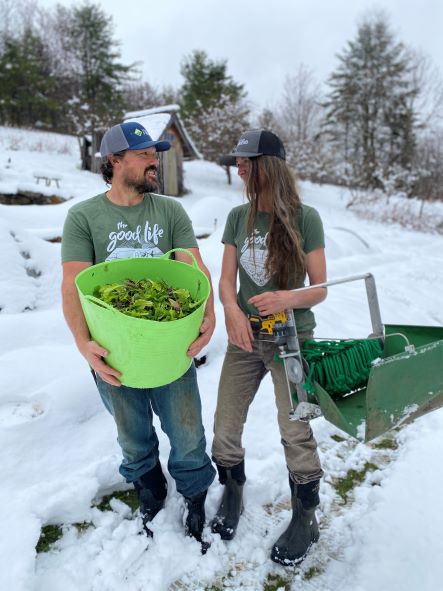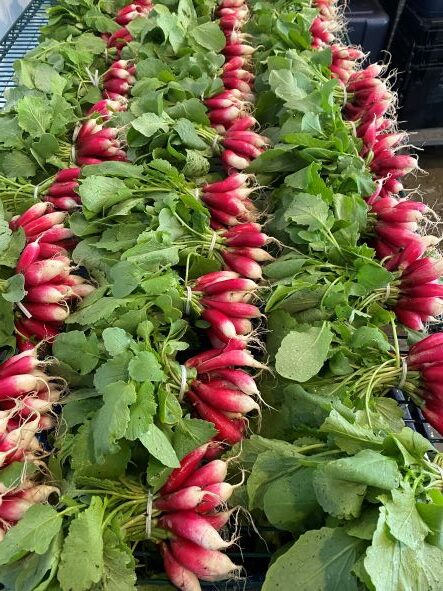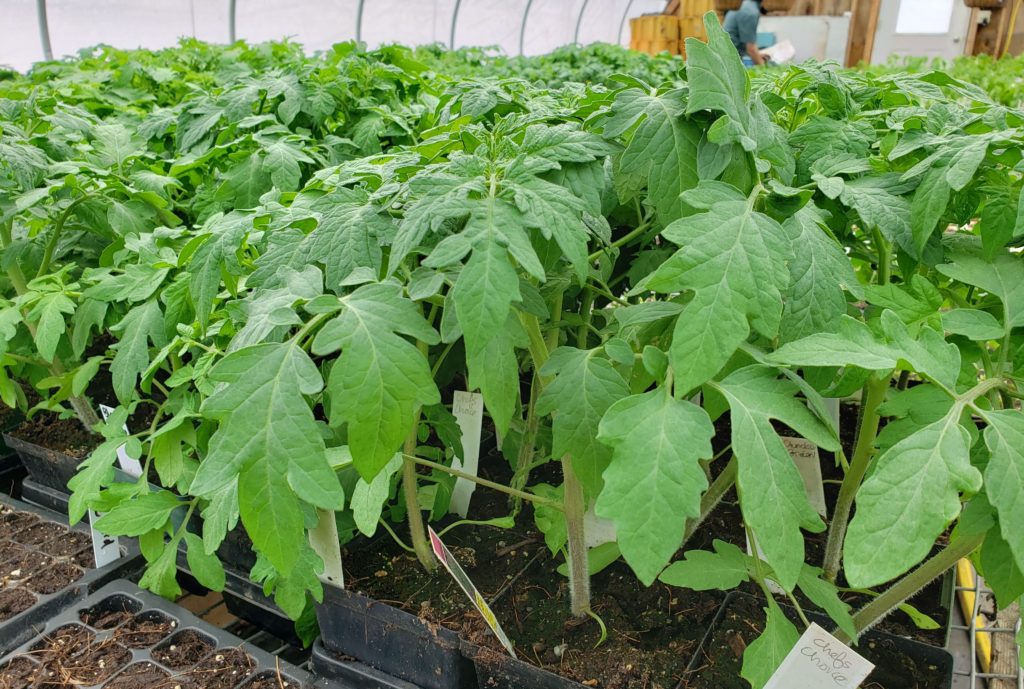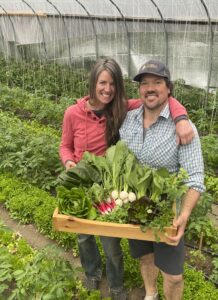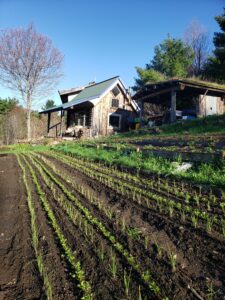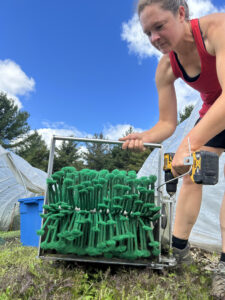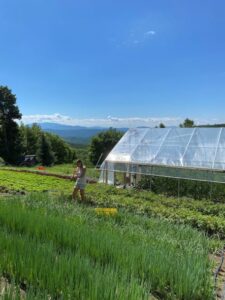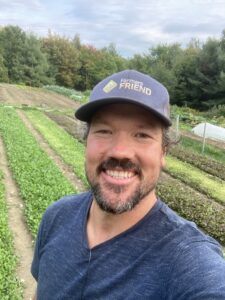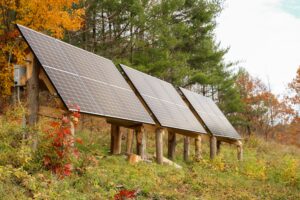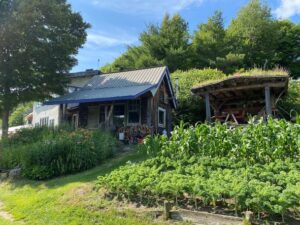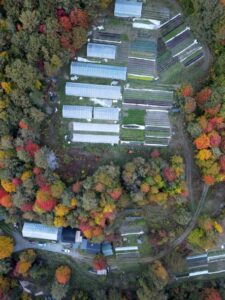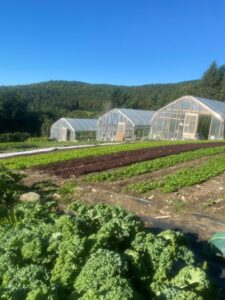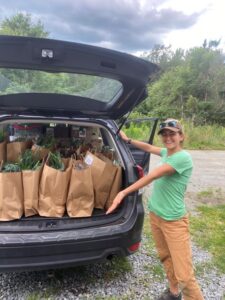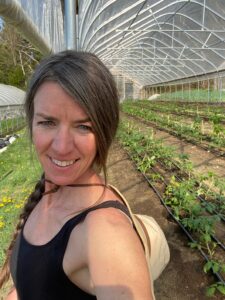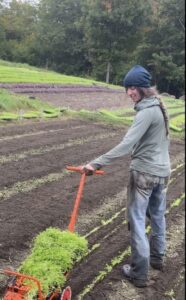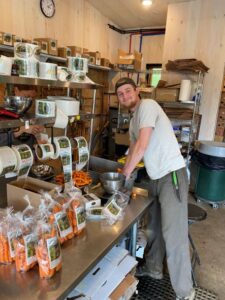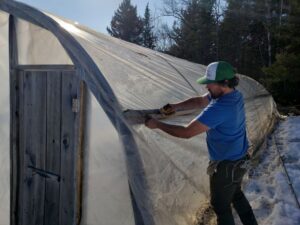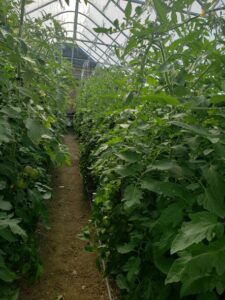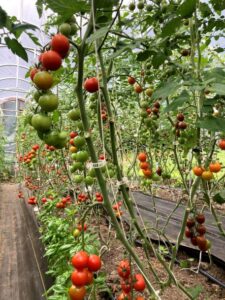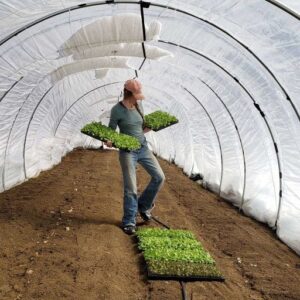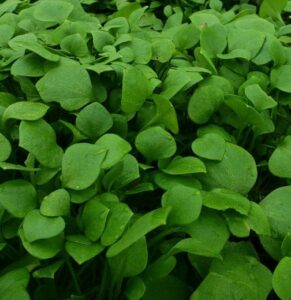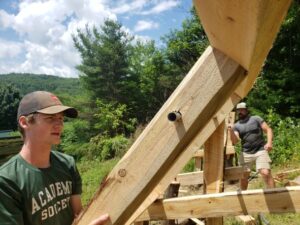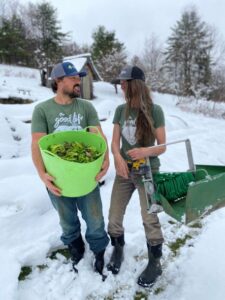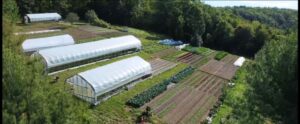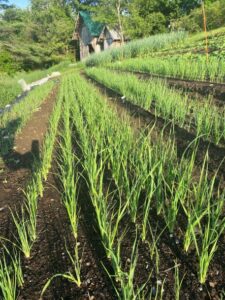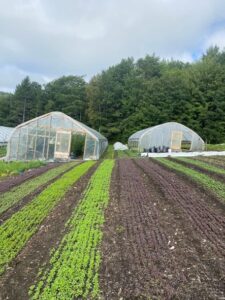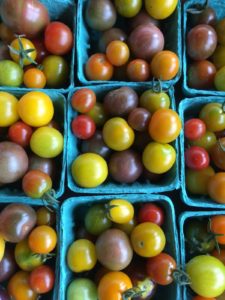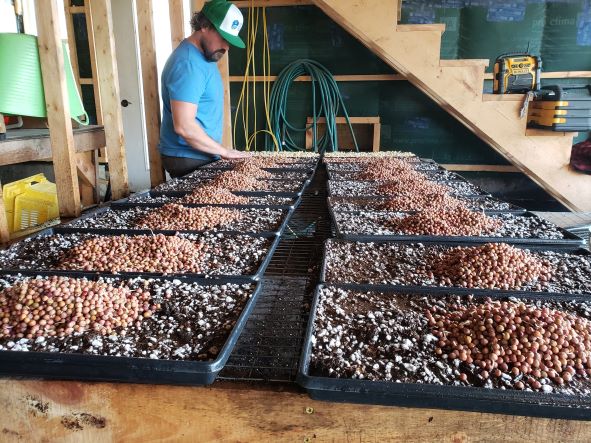
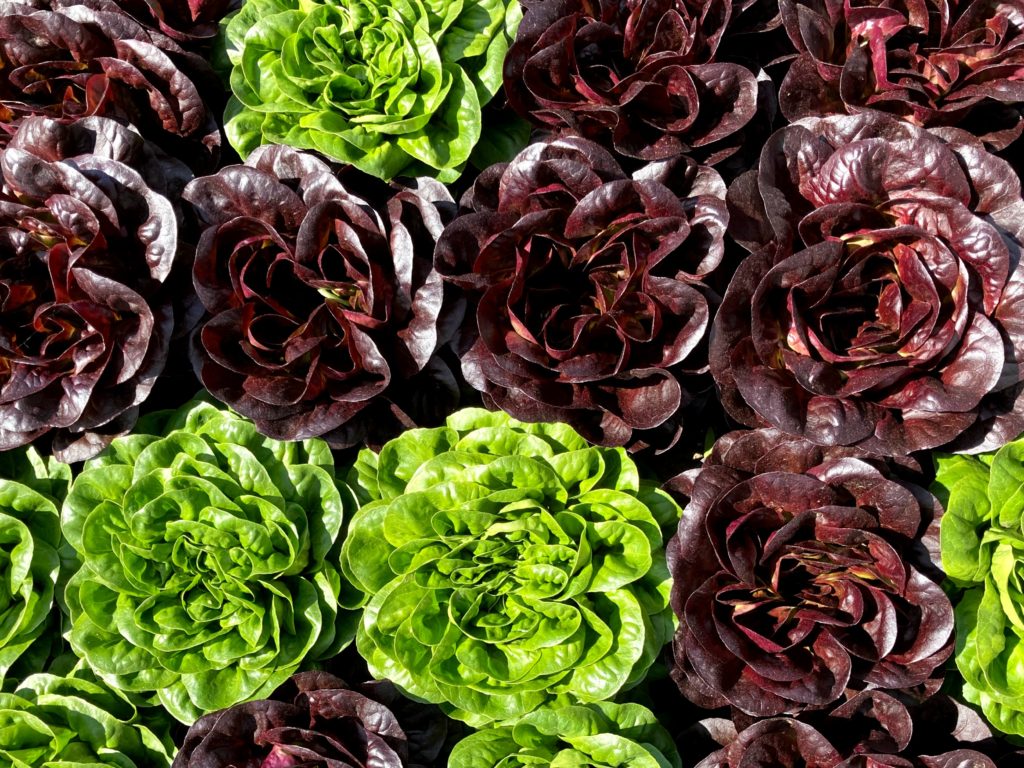
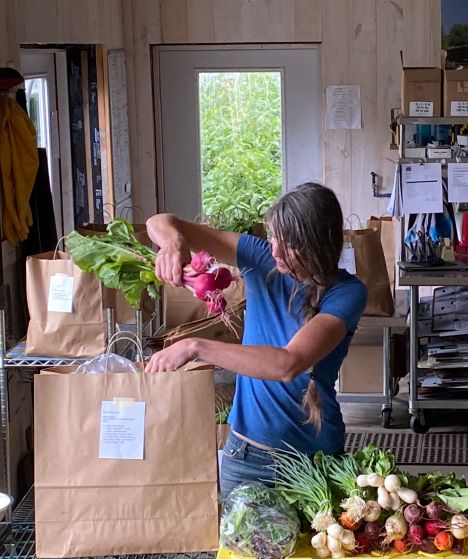
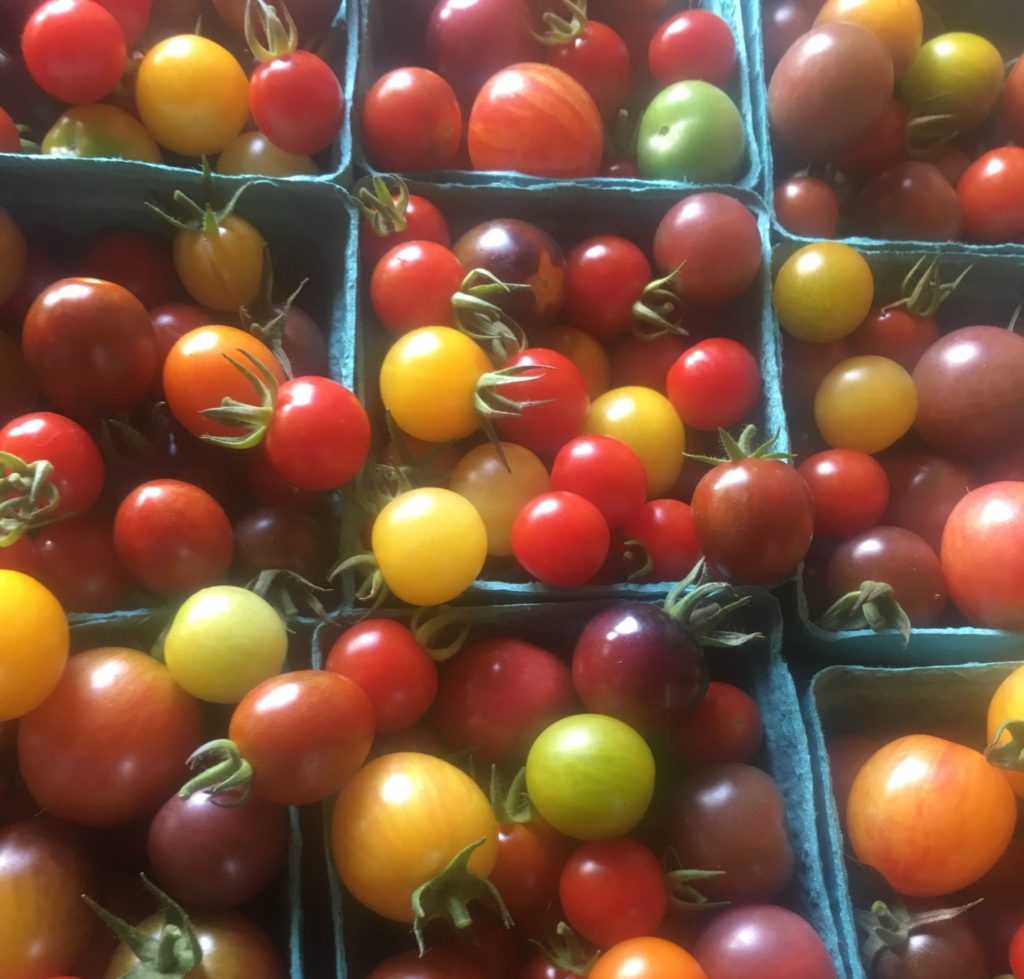
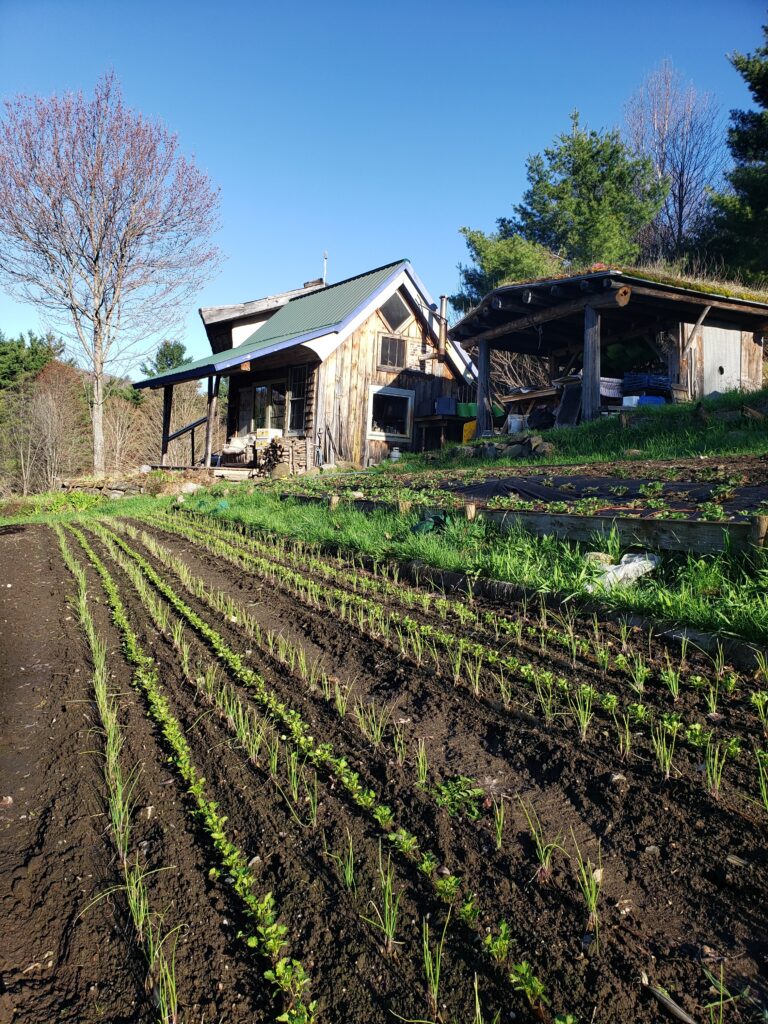
We farm here first and foremost here because it is our home. We live in an incredible town and our south facing hillside has deep fertile soil. Farming on steeply sloped land presents its challenges, but we have developed many strategies to not only successfully farm here, but also to use the slope to our advantage as part of our farming system. One of the strategies we use is to have raised garden beds that run East to West across the slope. The pathways in between our beds collect rainwater during storms and allow it time to absorb down into the ground to feed our crops and replenish ground water, as opposed to having it run off. These raised beds are critical to eliminating soil erosion on our farm. Any soil that gets washed off the bed from rainwater collects in the pathway just below. Once a year we move the soil from the pathway back to the garden bed. Another strategy we use to mitigate soil errosion is no till farming. One advantage to our south facing hillside farm is that early and late season, when the sun is low in the sky, our hill acts as a solar heat collector… allowing us to grow crops over a longer season than most farms would at 1500’ of elevation in zone 4.
And lastly, farming on a hillside is beautiful. If you’ve ever seen hillside farms in Asia, Europe or South America…there is something special about farming in a vertical lanscape.
What is no-till farming and why do we practice it?
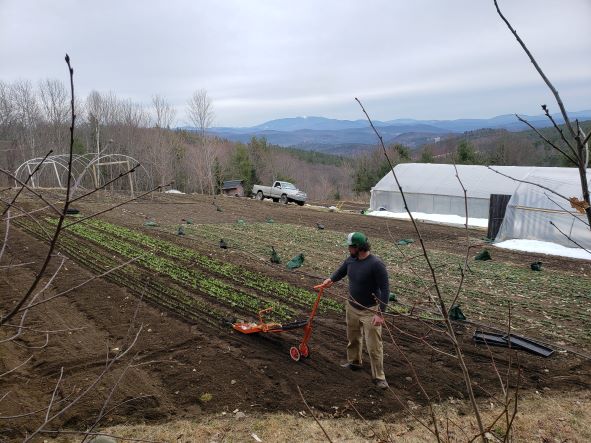
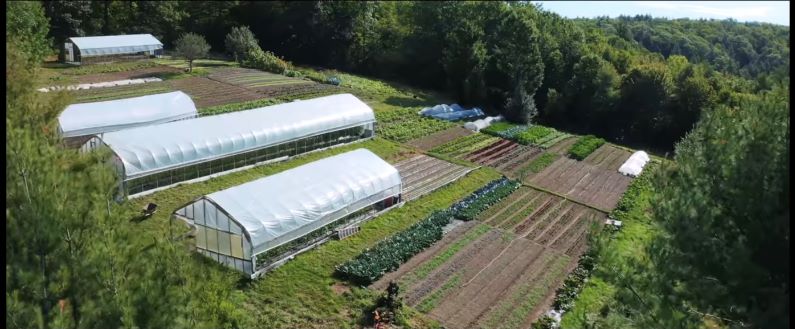
A title
Image Box text
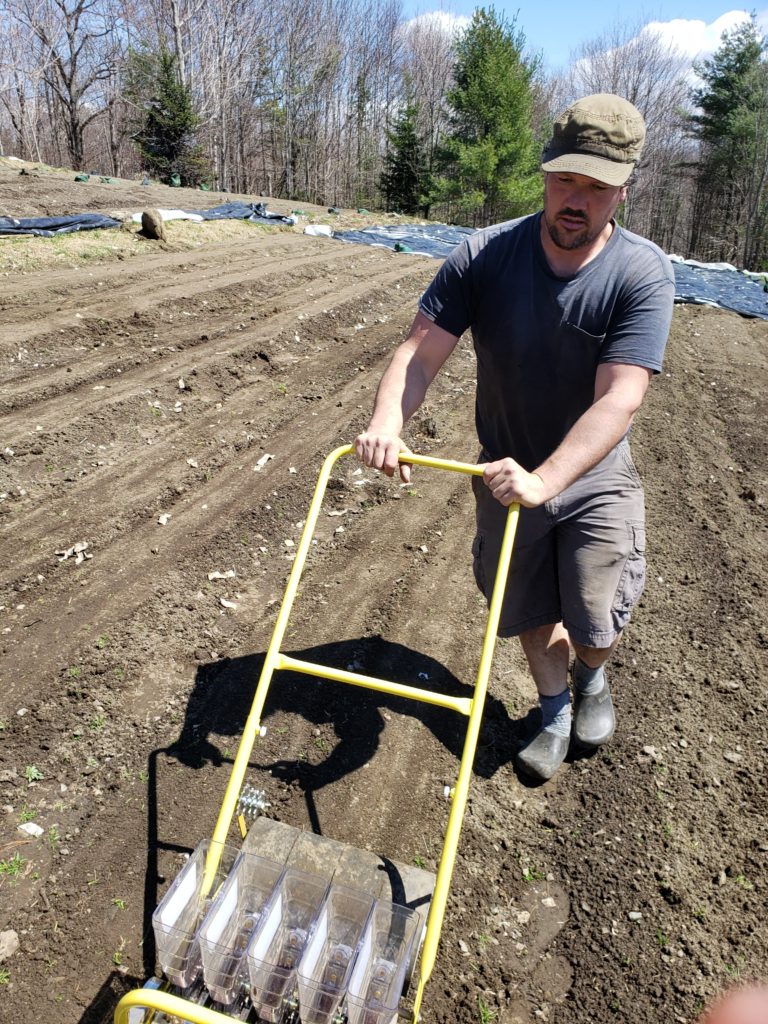
No till farming is being practiced more and more around the world as a strategy to limit soil erosion, to capture carbon in the soil to mitigate climate change, to use less soil inputs like amendments and fertilizers and to limit the use of petroleum powered equipment. There are many different ways to no-till farm. All of them include never deeply tilling or plowing the soil once it’s been open for agriculture. Some styles of no till farming involve only minimally disturbing the surface of the soil. Because we direct seed small seeded crops like salad greens, we need to disturb the top 1″-1 ½” of the soil to create proper tilth for seeding. Beyond that, we never disturb the subsoil except when harvesting root crops, or when using a broadfork to aerate the soil. One major benefit of no till farming is that you use significantly less fertilizers and amendments than in traditional farming. By keeping the soil structure intact and not disturbing it , all of the microorganisms that inhabit the soil create pathways and processes to deliver nutrients to plants roots. These pathways allow plants to efficiently gain access to all of the available nutrients in the soil, which equals less inputs from the farmer . In traditional tillage, a greater amount of fertilizer and amendments are required because with the soil structure constantly being broken up, nutrients aren’t as available to the plants.Water management and retention is another benefit. The intact soil structure of a no till farm has a greater ability to hold water during dry times and to allow the plants to grow well during wet times.
No till farming also allows us to grow more food on less land. We grow more food in less space and are able to plant densely because nutrients are readily available in the soil. We, and many others, believe that one of the major solutions to feeding the population is bio-intensive no till farming.
Lastly and most important to us, no till farming allows us to capture carbon in the soil where it belongs, and keep it out of the atmosphere. When you till soil, most of the carbon that is produced by the natural process of organic matter decomposition is released into the atmosphere. In a no till system, most of the compost, plant debris, or any organic matter that breaks down in the bed is brought down into the soil via the natural pathways inherent in good soil structure. These will remain there forever until the soil is disturbed.In addition to keeping all the carbon in the soil that naturally exist there, we add large amounts of carbon to the soil in the form of compost, which accumulates over time to create large carbon repositories. Climate scientists believe that expanding no till farming across the planet is one of the most practical ways to remove carbon from the atmosphere and many believe that if all farming were no till, the effects of climate change could begin to be reversed.
Off Grid farming
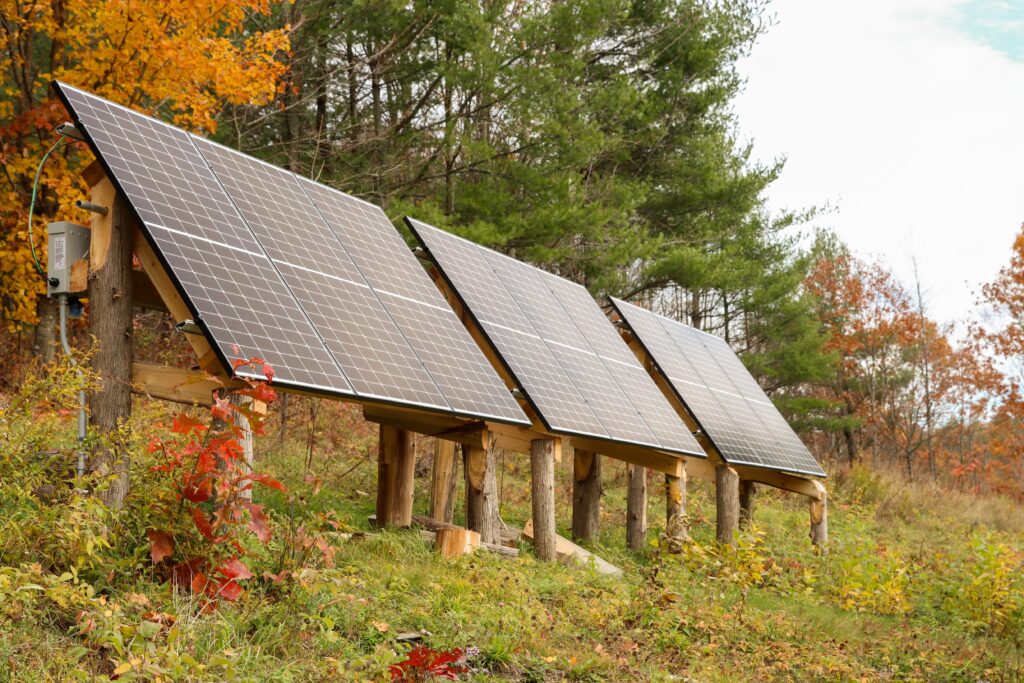
We are a solar powered, off grid farm. We started out off grid for practical reasons. We have a long driveway which makes it very expensive to bring power to our farm. We have stayed off grid for environmental reasons. Being off grid forces us to pay for our power usage up front, in the form of solar panels and batteries for storage. It also forces us to think about every bit of power we use. This causes us to be more efficient with our power use. If we decide we need more power to irrigate, run fans or cool vegetables, we have to buy more solar panels or be more efficient…as opposed to just plugging in. Being off grid also keeps us in tune with nature. When it is sunny we try to accomplish our high power demand tasks like irrigating or running power tools. When it is cloudy we conserve as much as possible. Sometimes when it’s been cloudy, we have to run a generator to charge our batteries, but we plan to continue to expand our solar power system to eliminate this as much as possible.

